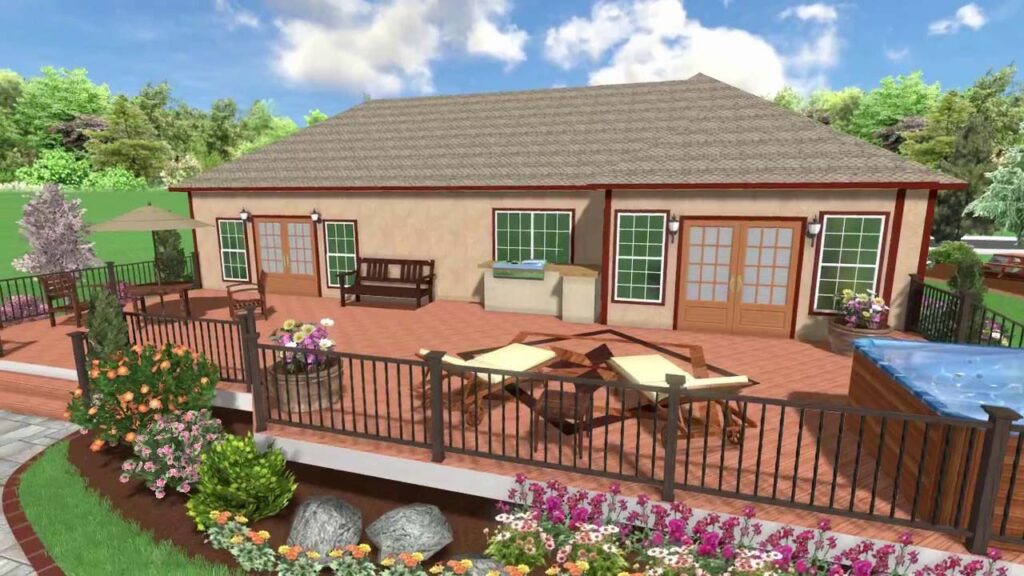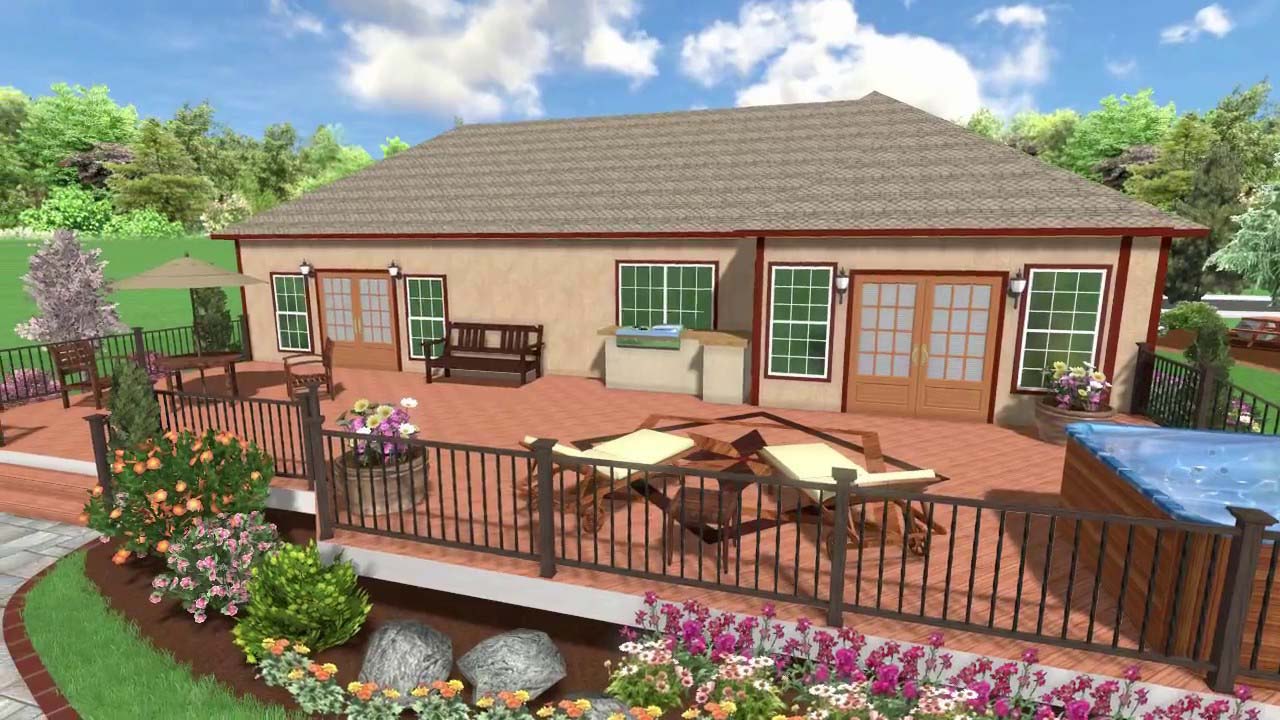
Realtime Landscaping Pro 2013: A Retrospective Look at a Landmark Design Tool
In the ever-evolving world of landscape design software, certain programs stand out as milestones, shaping the industry and influencing future innovations. Realtime Landscaping Pro 2013 was undoubtedly one such program. Released several years ago, it offered a suite of features that were groundbreaking for its time, empowering landscape architects, designers, and homeowners alike to visualize and create stunning outdoor spaces. This article takes a retrospective look at Realtime Landscaping Pro 2013, examining its key functionalities, its impact on the design landscape, and its lasting legacy.
The Rise of Realtime Landscaping Pro 2013
Before diving into the specifics, it’s important to understand the context in which Realtime Landscaping Pro 2013 emerged. The landscape design industry was, and still is, undergoing a digital transformation. Moving away from traditional paper-based methods, designers sought software solutions that could streamline the design process, enhance visualization, and improve communication with clients. Realtime Landscaping Pro 2013 answered this call by providing a user-friendly platform with a robust set of tools.
Realtime Landscaping Pro offered a significant leap forward in terms of accessibility and functionality compared to previous generations of landscaping software. Its intuitive interface made it easier for both professionals and hobbyists to create detailed landscape plans. Let’s explore some of the features that made Realtime Landscaping Pro 2013 a game-changer.
Key Features and Functionalities
Intuitive Design Interface
One of the hallmarks of Realtime Landscaping Pro 2013 was its user-friendly interface. The program was designed to be accessible to users of all skill levels, from seasoned landscape architects to homeowners with limited design experience. The drag-and-drop functionality made it easy to add and arrange plants, trees, buildings, and other landscape elements. This ease of use significantly reduced the learning curve, allowing users to quickly create professional-looking designs.
Extensive Plant Library
A crucial aspect of any landscape design software is its plant library. Realtime Landscaping Pro 2013 boasted an extensive collection of plants, trees, shrubs, and flowers, each with detailed information about their growth habits, water requirements, and sunlight needs. This comprehensive library enabled users to select the right plants for their specific climate and soil conditions, ensuring the long-term health and sustainability of their designs. Users could also import their own custom plant models, expanding the library even further.
3D Visualization Capabilities
The 3D visualization capabilities of Realtime Landscaping Pro 2013 were truly impressive for its time. The software allowed users to create realistic 3D renderings of their landscape designs, providing clients with a clear and immersive view of the final product. This feature was particularly valuable for communicating design ideas and obtaining client approval. Users could walk through their virtual landscapes, view them from different angles, and even simulate different times of day to see how the lighting would affect the overall appearance.
Terrain Modeling and Grading
Accurate terrain modeling is essential for creating realistic and functional landscape designs. Realtime Landscaping Pro 2013 included powerful terrain modeling tools that allowed users to create and modify the topography of their sites. Users could import survey data, create contours, and adjust elevations to accurately represent the existing landscape. The software also included grading tools that allowed users to create slopes, terraces, and retaining walls, ensuring proper drainage and preventing erosion.
Irrigation and Lighting Design
Beyond the aesthetic aspects of landscape design, Realtime Landscaping Pro 2013 also addressed the practical considerations of irrigation and lighting. The software included tools for designing efficient irrigation systems, allowing users to place sprinklers, drip lines, and other irrigation components. It also included tools for designing outdoor lighting schemes, allowing users to place lights, adjust their intensity and color, and create dramatic nighttime effects. These features helped users create landscapes that were both beautiful and functional.
Construction Documentation
Realtime Landscaping Pro 2013 facilitated the creation of detailed construction documents. The software could generate plans, elevations, and sections, providing contractors with the information they needed to build the designed landscape accurately. This feature streamlined the construction process and helped to minimize errors and delays. [See also: Landscape Design Software Comparison] The ability to export designs in various formats also ensured compatibility with other software programs used by contractors and other professionals.
The Impact of Realtime Landscaping Pro 2013
Realtime Landscaping Pro 2013 had a significant impact on the landscape design industry. It empowered designers to create more realistic and detailed designs, communicate their ideas more effectively, and streamline the design process. The software also made landscape design more accessible to homeowners, allowing them to visualize and plan their own outdoor spaces. Here are some of the ways in which Realtime Landscaping Pro 2013 influenced the industry:
- Improved Visualization: The software’s 3D visualization capabilities allowed designers to create realistic renderings of their designs, providing clients with a clear understanding of the final product.
- Enhanced Communication: The software’s ability to generate construction documents streamlined the communication process between designers and contractors.
- Increased Efficiency: The software’s intuitive interface and comprehensive set of tools helped designers to work more efficiently, reducing the time and effort required to create landscape designs.
- Greater Accessibility: The software’s user-friendly design made landscape design more accessible to homeowners, empowering them to plan and create their own outdoor spaces.
The Legacy of Realtime Landscaping Pro 2013
While newer versions of Realtime Landscaping Pro and other landscape design software have since been released, Realtime Landscaping Pro 2013 remains a significant milestone in the history of the industry. It helped to pave the way for the development of more advanced and sophisticated landscape design tools. Many of the features and functionalities that were introduced in Realtime Landscaping Pro 2013 are now standard in modern landscape design software. The program’s legacy can be seen in the continued emphasis on user-friendliness, 3D visualization, and comprehensive plant libraries in contemporary software.
The software’s impact extended beyond just professionals. Homeowners who used Realtime Landscaping Pro 2013 often found themselves more engaged in the design process, leading to more personalized and satisfying outdoor spaces. The ability to visualize the end result before even breaking ground provided a level of confidence and control that was previously unavailable.
Realtime Landscaping Pro 2013: Where is it Now?
While Realtime Landscaping Pro 2013 might not be the latest version available, it still holds a place in the hearts of many users. For some, it represents a familiar and reliable tool that they continue to use for smaller projects. However, it’s important to acknowledge the advancements in technology and the benefits of upgrading to newer versions. Newer versions typically offer enhanced features, improved performance, and better compatibility with current operating systems.
For those still using Realtime Landscaping Pro 2013, it’s worth considering the advantages of migrating to a newer version or exploring alternative landscape design software options. Modern software often includes features such as cloud-based collaboration, mobile accessibility, and integration with other design tools. [See also: Best Landscape Design Apps for 2024] These advancements can significantly improve workflow and productivity.
Conclusion: Reflecting on a Design Pioneer
Realtime Landscaping Pro 2013 was a groundbreaking program that played a significant role in shaping the landscape design industry. Its intuitive interface, comprehensive features, and powerful 3D visualization capabilities empowered designers and homeowners alike to create stunning outdoor spaces. While newer versions of the software have since been released, Realtime Landscaping Pro 2013 remains a testament to the power of innovation and the enduring legacy of well-designed software. Its impact can still be felt today in the design choices we make and the tools we use to bring our outdoor visions to life. The evolution of landscape design software is a testament to the ongoing pursuit of better visualization and design tools, and Realtime Landscaping Pro 2013 was a crucial stepping stone in that journey. Its influence is undeniable, and its contributions to the field will be remembered for years to come. Realtime Landscaping Pro 2013 provided a significant boost to both professional and amateur landscape designers.

